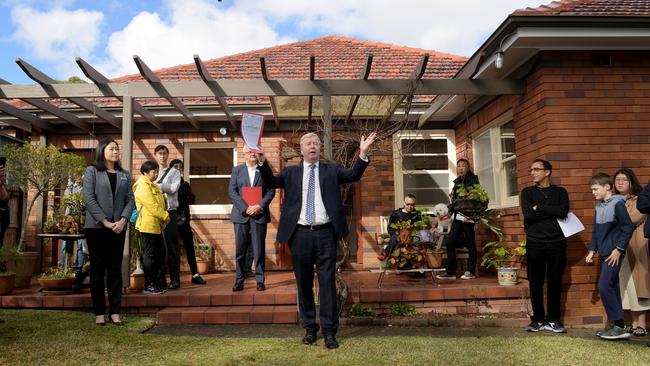CBA sheets mortgage growth slump home to slide in demand at ASIC responsible lending hearing
The slide in home loan growth has been caused by a lack of buyer interest, CBA has told an ASIC hearing.

The slide in demand for home loans which has pushed credit growth to its slowest pace on record has been caused by a lack of buyer interest, according to Commonwealth Bank.
The admission stands in contrast to the views of some politicians, banks and industry regulators that have blamed falling house prices and a decline in credit growth on a perceived tougher approach by the Australian Securities & Investments Commission to enforcing responsible lending laws in the wake of the royal commission.
Appearing before the first ASIC public hearing into responsible lending laws, CBA chief risk officer for the bank’s retail division, Michael Kavanagh said the lender had analysed mountains of data on loan applications, broker and branch channel information and the average size of loans being sought, to understand why credit growth was slumping.
“In our view this is predominantly a demand side issue right now in the supply of credit,” Mr Kavanagh said. CBA executive general manager of home buying Daniel Huggins also asked for ASIC introduce more clarity on its regulations.
“We are supportive of increased prescription,” Mr Huggins said.
According to lending figures from the Reserve Bank and the Australian Prudential Regulation Authority, annual credit growth slowed to 3.5 per cent in June, down from 3.7 per cent the prior month and the slowest rate on record.
In a series of submissions in response to ASIC’s plans to shore up responsible lending laws, the banking sector attacked the proposals as impractical, anti-competitive and potentially damaging to the economy.
ASIC in February launched the consultation process over responsible lending conduct, with an updated guidance note set to be released by September this year, and has proposed to give lenders greater clarity on the kinds of information that can be used for verification of customers’ financial situations.
It has also set out what it considers “reasonable steps” to verify consumer information. These will change over time as new technologies, such as the government’s open banking reforms and data aggregation services, become available. It will also ensure banks check to see if customers are “operating at the margins of their disposable income”.
Speaking in Sydney for the first of two public hearings on the proposals today, ASIC commissioner Sean Hughes said some of the information contained in the 72 submissions had arguments that ASIC “factually or otherwise disagree” with.
Mr Hughes also warned ASIC’s “silence on a matter raised should not be taken as our acceptance of it”.
Both Mr Kavanagh and Mr Huggins voiced concerns about the difficulty of accounting for which customer expenses were discretionary and which were not.
Mr Huggins said customers with transaction accounts at other banks left CBA without visibility of a lot of spending. He also said bulk purchases at supermarkets or department stores were difficult to judge. “Is it clothing for a child or is it DVDs or video games?” he said.
He also said expenses such as a customer ordering UberEats seven nights a week were reasonably challenging to determine if it would be an ongoing cost should a customer get a loan.
Mr Kavanagh said a customer spending a lot of money at an artisan bakery may have a gluten intolerance and need special bread, which would make the cost ongoing, or the customer could simply prefer the bread but be able to switch to a cheaper option if they took out a loan.
In the latest of a series of moves to supercharge the housing market, the Australian Prudential Regulation Authority — following the re-election of Scott Morrison — eased restrictions on the lending sector. Under APRA’s new “go easy” approach to financial regulation, lenders will be free to offer bigger loans to borrowers who previously couldn’t clear a hurdle requiring that they could manage mortgage repayments if interest rates were to rise above a hypothetical minimum of 7 per cent.
The unwinding of banking regulations comes after the Morrison government and financial watchdogs grew increasingly worried about the economic impact of sliding house prices, which are down by 15 per cent in Sydney and Melbourne since mid-2017.



To join the conversation, please log in. Don't have an account? Register
Join the conversation, you are commenting as Logout